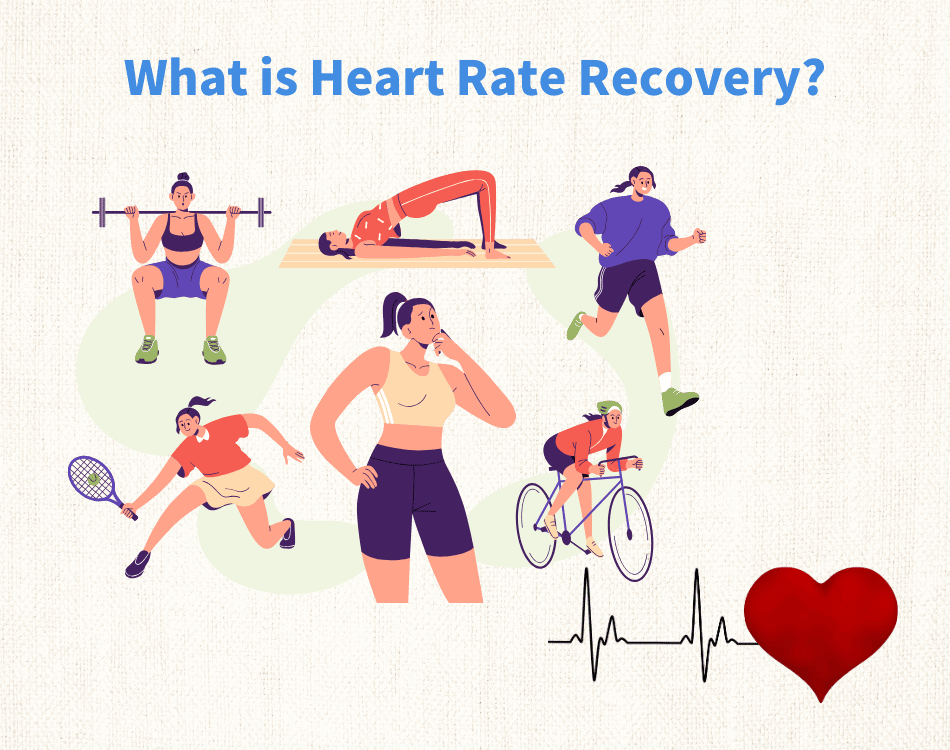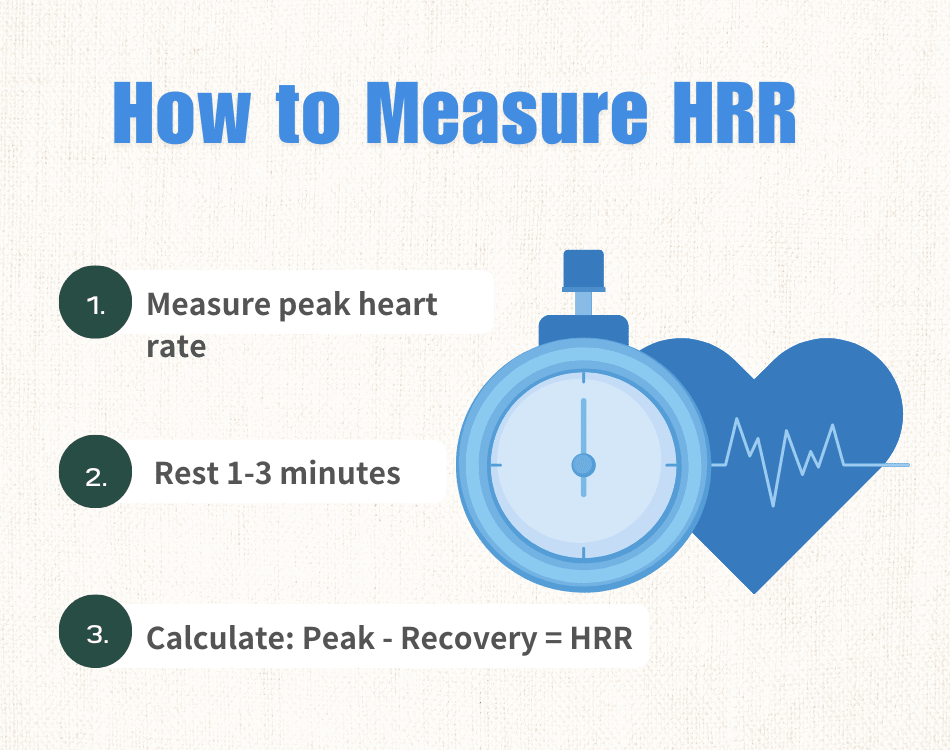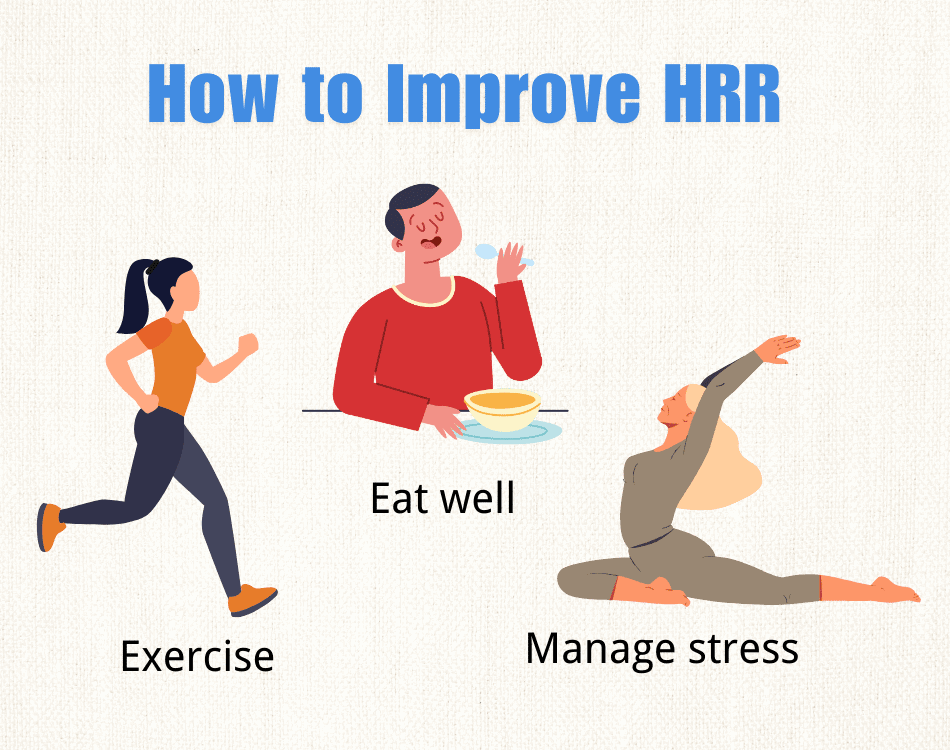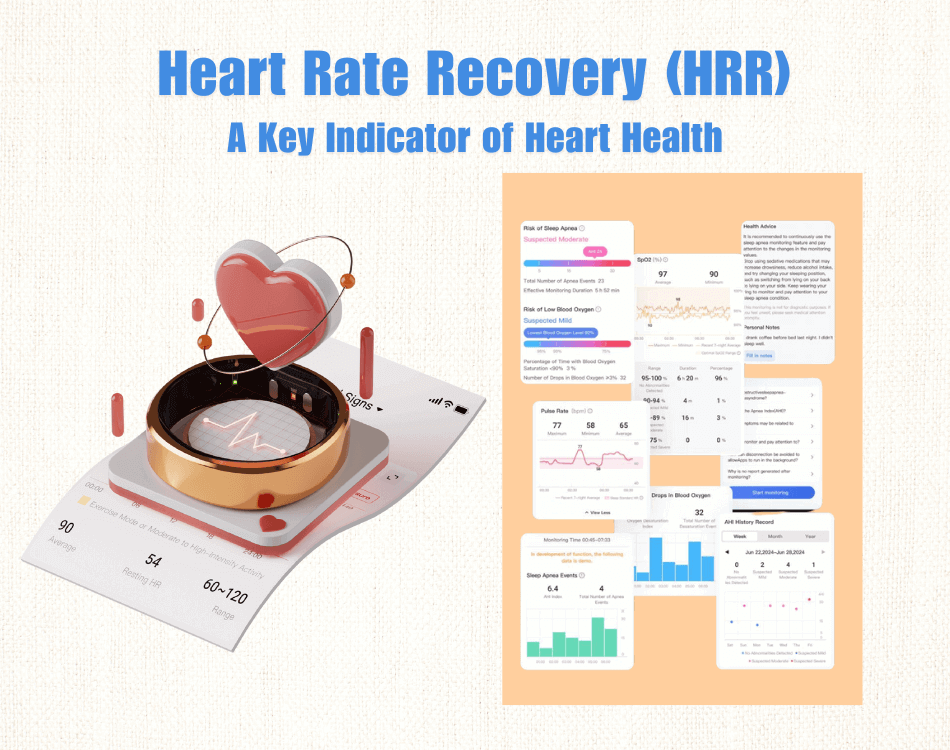When you’re working towards your fitness goals, you probably focus a lot on strength, endurance, and how hard you push yourself during workouts. But there’s something just as important — heart rate recovery (HRR). HRR is how quickly your heart rate drops back to normal after exercise. It’s a simple yet powerful measure of your heart’s health and overall fitness. The faster your heart rate recovers, the better your heart is at handling stress and exercise.
The best part? Monitoring your HRR is easier than ever with tools like the RingConn Smart Ring, which tracks your heart rate in real time and gives you accurate feedback about your recovery.
What is Heart Rate Recovery?
Heart rate recovery (HRR) refers to how quickly your heart rate returns to its resting level after exercise. During a workout, your heart rate increases to deliver oxygen and energy to your muscles. Once you stop exercising, your heart rate starts to decrease. The faster it drops, the more efficient your cardiovascular system is. A quicker HRR indicates that your heart is strong and your body is effectively adapting to physical activity.

For more information on how heart rate changes during sleep, check out our guide on normal sleeping heart rate by age.
What is Cardio Recovery Rate?
Your cardio recovery rate measures the speed at which your heart rate declines after peak exercise intensity, calculated by:
Cardio Recovery Rate=Peak Heart Rate−1 Minute Post Exercise Heart RateCardio Recovery Rate=Peak Heart Rate−1 Minute Post Exercise Heart Rate
For example, dropping from 180 bpm to 150 bpm in 60 seconds equals a 30 bpm recovery rate. Higher numbers signal stronger cardiovascular fitness.
RingConn Gen 2
Why is Heart Rate Recovery Important?
HRR is a key indicator of your cardiovascular health. If your heart rate takes longer to return to normal after exercise, it might signal that your heart isn’t as efficient as it could be. Slower recovery has been linked to health risks like heart disease, diabetes, and even an increased risk of early death. By tracking HRR regularly, you can spot potential issues early and take action before things become more serious.
An exercise physiologist, explains, “Heart rate recovery gives you a good idea of how well your body is managing stress. The faster your heart rate recovers, the better your autonomic nervous system is working, helping you handle physical and emotional stress.”
In short, HRR not only shows how fit your heart is but also reflects how well your body can return to calm after stress.
How to Measure Your Cardio Recovery Rate
Measuring your cardio recovery rate (HRR) is simple and doesn’t require much equipment. Here’s how you can do it:

- Measure your peak heart rate: Right after finishing your workout, check your heart rate at its highest point.
- Measure your recovery heart rate: After stopping, rest for 1 to 3 minutes, then check your heart rate again.
- Calculate your HRR: Subtract your recovery heart rate from your peak heart rate. The bigger the difference, the faster your heart is recovering.
For example, if your peak heart rate was 180 beats per minute (BPM), and after one minute it drops to 150 BPM, your HRR would be 30 BPM.
With the RingConn Smart Ring, this process is even easier. The Smart Ring tracks your heart rate during both exercise and recovery, providing you with real-time insights and more accurate data.
RingConn Gen 2 Air
What’s a Good Heart Rate Recovery?
A “good” HRR can vary depending on things like age, fitness level, and overall health. But as a general rule, if your heart rate drops by 18 beats per minute (BPM) or more in the first minute after exercise, that’s a good sign.
Here’s a breakdown of what HRR might look like for different people:
- Young, fit individuals: They typically see quicker HRR because their cardiovascular system is more efficient.
- Older adults or less fit individuals: HRR may be slower, but improvements are possible with consistent training.
Tracking your HRR over time helps you see how your fitness is improving. If your recovery time is slow, it could signal that you need to focus on things like getting more rest or improving your nutrition.
How to Improve Heart Rate Recovery
Improving your HRR isn’t just about pushing yourself harder in the gym. It’s also about improving your overall heart health. Here are a few tips to help boost your HRR:

- Regular aerobic exercise: Activities like running, swimming, cycling, or rowing can make your heart more efficient at recovering.
- Live a healthy lifestyle: Eating well, getting enough sleep, and avoiding smoking or excessive drinking all contribute to better heart health.
- Manage stress: Practices like meditation, deep breathing, and yoga can help lower stress and improve your HRR over time.
By focusing on these areas, you can boost your HRR, reduce your risk of heart disease, and improve your overall fitness.
Heart Rate Recovery (HRR): A Key Indicator of Heart Health
Heart rate recovery (HRR) is an important metric that reflects your cardiovascular fitness. While RingConn currently does not provide direct HRR tracking, understanding the concept of HRR and why it matters can help you optimize your fitness goals. HRR is a valuable indicator of how efficiently your heart recovers after exercise, and improving it is crucial for overall heart health.

How RingConn Helps with Heart Rate Monitoring
While the RingConn app doesn’t directly measure HRR, it provides 7-day, 24/7 heart rate monitoring, allowing you to track your heart rate during exercise and rest. By continuously monitoring your heart rate, you can gain valuable insights into your fitness progress and cardiovascular health.
Health trend tracking: Over time, the Smart Ring stores your heart rate data, giving you a comprehensive view of your heart’s behavior and fitness progress.
Continuous heart rate monitoring: RingConn tracks your heart rate around the clock, so you can spot trends over time and understand your heart’s performance at rest and during exercise.
Conclusion
Heart rate recovery is an important, yet often overlooked, part of your fitness journey. By paying attention to how quickly your heart rate recovers after exercise, you can get a clearer picture of your cardiovascular health and overall fitness.
With regular monitoring and a few simple lifestyle changes, you can improve your HRR and lower your risk for heart disease and other health issues. The RingConn Smart Ring makes it easier than ever to track your heart rate recovery, giving you the insights you need to reach your fitness goals.
Start monitoring your heart rate recovery today, and see how improving this key metric can help you become healthier and more fit over time!




댓글 남기기
이 사이트는 hCaptcha에 의해 보호되며, hCaptcha의 개인 정보 보호 정책 과 서비스 약관 이 적용됩니다.